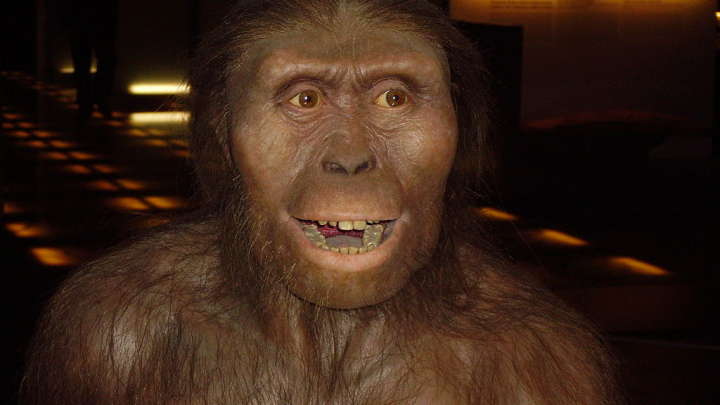Modern Apes May Be Smarter Than Our Australopithecus Ancestors
Four million years ago our ancestors had brains larger than modern apes, but they were probably less intelligent than gorillas or chimpanzees new research indicates.
When attempting to estimate the intelligence of extinct species anthropologists have relied on measuring brain case size. Bigger brains are assumed to mean greater thinking power, a theory that generally holds up today after some allowance for body size, at least among mammals.
However, Professor Roger Seymour of the University of Adelaide has called that into question. He argues energy consumption, not size, is what matters. Extra energy requires more oxygen, which means more blood, so consumption can be estimated from the size of the holes where carotid arteries enter to feed the brain.
In Proceedings of the Royal Society B, Seymour and co-authors compare the radii of these holes in 11 Australopithecus fossil skulls with those from 96 modern great apes. “It is known that the large human brain looks like a scaled-up primate brain in terms of size and neuron number. However, the study shows that cerebral blood flow rate of human ancestors falls well below the data derived from modern, non-human primates,” Seymour said in a statement.
Gorillas, chimpanzees, and orangutans have double the blood flow, suggesting they are capable of twice the thinking of our last ancestors outside the genus Homo. No wonder some countries have granted them personhood.
Although Seymour was able to calibrate hole radius with blood flow to the brain across many living species, it’s harder to measure animals’ intelligence. Nevertheless, speaking to IFLScience, he defended the idea blood flow is a better proxy than brain size. “It is the synapses, the connections between nerve cells, that are responsible for intelligence,” he said. “We know in humans 70 percent of the energy used by the brain is used by the synapses.”

If Seymour is right, it raises the question of whether gorillas, chimpanzees, and orangutans are getting smarter, albeit more slowly than humans, or if we are descended from what was once the not-so-bright branch of the ape family tree.
“We would dearly love to compare changes in the ape blood flow, but there are no skulls of great ape ancestors available for us to study,” Seymour told IFLScience. However, he notes more recently evolved primates have brains that use more blood than older counterparts, and suspects the other great apes thinking capacity is growing with time. Maybe Planet of The Apes is not so far-fetched after all.
For most of primate evolution, Seymour added, blood flow has had a linear relationship with brain size, something that is not true for other animals. However, hominids have seen a tremendous increase in blood flow, much faster than the rise in brain size, something essential to our rise.
Seymour’s work does raise the question of how Australopithecines were apparently able to make sophisticated tools.




